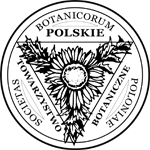Genotype by Environment Interactions for Yield-Related Traits in Tunisian Barley (Hordeum vulgare L.) Accessions Under a Semiarid Climate
Abstract
Keywords
References
Gauch, H. G., & Zobel, R. W. (1997). Identifying mega-environments and targeting genotypes. Crop Science, 37, 311–326. https://doi.org/fp835v
Mirosavljević, M., Momčilović, V., Pržulj, N., Hristov, N., Aćin, V., Čanak, P., & Denčić, S. (2016). The variation of agronomic traits associated with breeding progress in winter barley cultivars. Žemdirbystė (Agriculture), 103, 267–272. https://doi.org/10.13080/z- a.2016.103.034
Pacheco, A., Vargas, M., Alvarado, G., Rodríguez, F., López, M., Crossa, J., & Burgueño, J. (2016). GEA-R (Genotype Environment Analysis whith R for Windows [Software]. https://hdl.handle.net/11529/10203
Pržulj, N., & Momčilović, V. (2006). Barley breeding at Institute of Field and Vegetable Crops. Zbornik radova Instituta za ratarstvo i povrtarstvo, 42(1), 361–370.
Schmalenbach, I., Léon, J., & Pillen, K. (2009). Identification and verification of QTLs for agronomic traits using wild barley introgression lines. Theoretical and Applied Genetics, 118, 483–497. https://doi.org/10.1007/s00122-008-0915-z
Shrestha, S., Asch, F., Dusserre, J., Ramanantsoanirina, A., & Brueck, H. (2012). Climate effects on yield components as affected by genotypic responses to variable environmental conditions in upland rice systems at different altitudes. Field Crops Research, 134, 216–228. https://doi.org/10.1016/j.fcr.2012.06.011
Shukla, G. K. (1972). Some statistical aspects of partitioning genotype environmental components of variability. Heredity, 29, 237–245. https://doi.org/10.1038/hdy.1972.87
van Oosterom, E., & Ceccarelli, S. (1993). Indirect selection for grain yield of barley in harsh Mediterranean environments. Crop Science, 33, 1127–1131. https://doi.org/cn8zkh
von Korff, M., Grando, S., Del Greco, A., This, D., Baum, M., & Ceccarelli, S. (2008). Quantitative trait loci associated with adaptation to Mediterranean dryland conditions in barley. Theoretical and Applied Genetics, 117, 653–669. https://doi.org/10.1007/s00122-008-0787-2
Yan, W., Hunt, L. A., Sheng, Q., & Szlavnics, Z. (2000). Cultivar evaluation and mega- environment investigation based on GGE biplot. Crop Science, 40, 597–605. https://doi.org/10.2135/cropsci2000.403597x
Zobel, R. W., Wright, M. J., & Gauch, H. G. (1988). Statistical analysis of a yield trial. Agronomy Journal, 80, 388–393. https://doi.org/b9rv26
DOI: https://doi.org/10.5586/aa.7344
|
|
|







